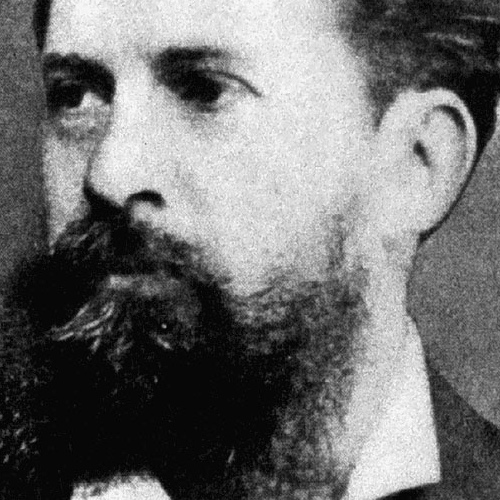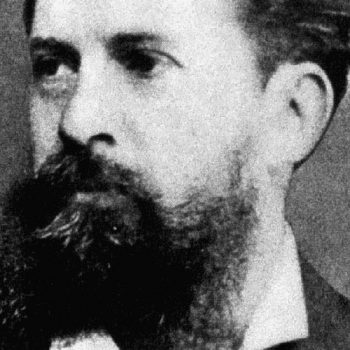Joseph Uscinski’s Conspiracy Theories, A Primer (Roman & Littlefield, 2019) is a helpful primer, providing, as Uscinski notes in the preface, not a complete picture of conspiracy theories, but a “complete enough picture.” While I think the book is useful, my comments here focus on three critical points in particular: 1) Uscinski’s attempt to neutralize the definition of “conspiracy theory” runs too much against the grain of the common language pejorative use of the term to be effective. 2) His distinction between “conspiracy facts” and “conspiracy theories,” based on the former aligning with “settled science,” operates with an overly simplistic model of science and of what is considered good evidence in the social sciences and humanities. 3) These two issues lead to a quite unhelpful result in that he lumps together theories of quite different seriousness as being conspiracy theories, without providing any means to differentiate usefully between those that it is important to consider and those that are utterly absurd. This in fact is a great disservice and opens his work to serious ideological misuses–whether intended or not.
One of Uscinski’s points in the book is that conspiracy theories are not rare. In fact, he argues that they are a “part of the human condition. Everyone believes at least one” (125). The truth of these assertions, of course, turn on the definitions of conspiracy and conspiracy theory. Uscinski, for his part, characterizes conspiracies as involving “as small group of powerful individuals acting in secret for their own benefit and against the common good” (22). He then goes on to offer a neutral characterization of conspiracy theories, simply defining them as theories about conspiracies. He means to lend his voice to those seeking to overturn a broad spread view that all conspiracy theories are wild and necessarily false. Conspiracies exist; and people have theories about them. As Uscinski puts it, “Conspiracy theories are accusatory ideas that could be either true or false, and they contradict the proclamations of epistemological authorities….” (23). To assume that conspiracy theories are wrong is, in Uscinski’s view, to prejudice one’s research program. But this too depends on what that research program is. If it is to show what contributes to people coming to believe theories that are largely untethered from evidence about small groups of individuals acting in secret to undermine the common good and benefit their own interest, then it doesn’t appear to undermine it at all. This research program just defines the goals differently.
In discussing conspiracy theories Uscinski does bring up many of usual views–the 9/11 conspiracy theories, the various Kennedy assassination theories, the flat earth theory, as well as the Reptilian conspiracy theory. The latter is a long-time conspiracy theory that alien lizard people have intermingled with humans are are secretly at the helms of power internationally, running human societies. But along with these he also characterizes as conspiracy theories the views that Trump collaborated with the Russians in his 2016 election, as well as the views of Bernie Sanders and Paul Krugman that the one percenters are involved in rigging the political system in the United States for their own benefit. These latter characterizations align with one of Uscinski’s other goals–to call into question the traditional assumption of a lot of those working on conspiracy theories that the Right wing in the US are more prone to conspiracy theories that the Left wing.
Uscinski attempts a kind of leveling. He wants to rid the term “conspiracy theory” of its negative connotation. And when it comes to politics in the US framework, he wants a “balanced approach” that “shows that Republicans and Democrats display nearly equal levels of conspiracy thinking” (97). The problem that occurs as he attempts the former is that he is pushing against the common language use of the term that is extremely negatively loaded. In reality, it is impossible for an academic book like Uscinski’s to change common language use. Even various authors he references, like Karl Popper, also use the term differently than Uscinski does. So treating the concept neutrally in a book that references so many others who use the term pejoratively proves somewhat tenuous.
Given the prevailing pejorative view of conspiracy theories there is perhaps no completely satisfactory solution to how to refer to a distinction between the theories of conspiracies that is neutral and Conspiracy Theories that are not. But given common language usage it seems some distinction is needed between the extremely low evidence (or absolutely absurd) theories and those that meet a higher evidence threshold. For these purposes, we might try distinguishing between conspiracies theories or theories of conspiracies. Quassim Cassam, in his Conspiracy Theories (Polity, 2019) opts for this strategy. He speaks of the zany “Conspiracy Theories” using capital letters and reserves the small cased spelling “conspiracy theories” for less zany variants. As little satisfying as that may be, I don’t see any way to get around something like this if we intend to honor the common language use of the term and avoid certain problems that come with conflating the two (some of which I mention below). Maybe a concerted effort to refer to the latter as theories of conspiracies would be helpful. In any case, I will adopt Cassam’s usage as I continue in this post.
Another concern of the book is that Uscinski has an overly simplistic epistemological view of when we should even characterize a view as a conspiracy theory rather than a conspiracy fact. It is a theory until “deemed true by the appropriate epistemological authorities” (41). This correlates with his view that the conspiracy facts are distinguished from conspiracy theories by their adherence to “settled science” (95).
The problem is that even “settled science,” especially in fields like history or the social sciences, are rarely settled once and for all. In fact, it is difficult to maintain a hard and fast distinction between the theories and the facts. Evidence emerges over time and social scientists and historians revise their views of what the best theory is in light of newly emergent evidence. They are generally dealing with theories — more or less well-established. In this they are often engaged in what Charles Sanders Pierce has called the process of abduction, reasoning to the best explanation. That best explanation depends on what evidence is available and what models of explanation have emerged with which to explain them. In line with Pierce’s view, “settled science” is rarely so settled. We fixate our beliefs as long as no better theory, accompanied by better evidence, is available (“The Fixation of Belief,” 1877) . Karl Popper’s view of falsification builds on this. His complimentary approach is that we don’t know that our ideas are true; and we hold them undogmatically until better evidence comes along. Uscinski would clearly benefit from more consideration of such epistemic issues.
Where Uscinski does touch on the topic of the differing evidence for different conspiracy theories, he abandons it in short order. “It would be useful to have a uniform standard for separating the zany conspiracy theories from those more likely to be true. Unfortunately, there is no accepted method for doing so” (28). In fact, Uscinski appears to long for a “uniform standard” that is better than the one social sciences and history have for any subject. We simply have no choice but to weigh theories in light of the best evidence available (however vague that is), and, if we are rational, to make a decision based on that. These ideas are developed by Popper in Conjecture and Refutation (1963).* This result may indeed be a bit fuzzy. But in many cases, it is enough to allow us to differentiate the zany from the plausible from the probably true.
Uscinski continues his above quote as follows: “Withholding belief from conspiracy theories is therefore the most consistent strategy, because believing some conspiracy theories but rejecting others would almost certainly rely on inconsistent evidentiary standards.” In contrast to Uscinski, I think, in fact, that the best answer to whether we should believe in a theory about a conspiracy is, it depends.
There is a wildly different amount of evidence available for the myriad of theories of conspiracies that Uscinski outlines. Take the contrast between the Reptilian Conspiracy Theory and the theory that the Trump campaign colluded with the Russians to subvert the 2016 election. It may still well be that I don’t have enough evidence to warrant belief that the Trump campaign in fact engaged in such a conspiracy. But it may be that some who are more privy to the entire Mueller investigation and other investigations do have enough evidence for that. In any case, there is a reason to take the latter theory seriously as possibly true and to reject the Reptilian Conspiracy Theory as obviously false. This doesn’t depend on inconsistent evidentiary standards.
Here reference to the idea of “warranted assertability” from the pragmatist philosopher, John Dewey, may be also helpful. Dewey, like Pierce, highlighted the tentative character of our truth claims and underlined the need to move away from the idea that we discovered, as we might say, Truth with a capital T rather than “truth” with a small-cased one. His concern, like Pierce’s, was that we abandon dogmatism and be willing to revise our views and theories in light of the best available evidence. In light of that, he goes so far as to say, “There is no belief so settled as not to be exposed to further inquiry” (LTI, LW12: 16). But he doesn’t mean by this that any type of questioning like we get from Conspiracy Theorists (note the caps) is advised. Rather, the evolving standards of the sciences and humanities provide us with some measures for distinguishing reasonable from unreasonable questions, good from bad evidence and so on. Here, the key is that we follow an evidence-based procedure in generating our views. Many of those looking into Russia collusion are doing that. None of those proposing the Reptilian Conspiracy Theory are.
The origin of so many zany Conspiracy Theories and the lack of adherence to any strict evidentiary standards shows them to be unworthy of belief. And precisely the adherence of some theories of conspiracy to such standards of evidence shows them to be more reasonable. How much evidence is enough evidence and what kind of evidence is the right kind? This will remain somewhat vague, but no more so than cases in court often are. We have good reason for rejecting Uscinski’s treatment of all these conspiracy theories that are not shown to be supported by “epistemological authorities” as on equal footing.
So far, we have highlighted then two primary weaknesses in Uscinski’s book. The first is in conflating all types of “conspiracy theories” and trying to force a non-pejorative definition onto a term that in its broad cultural use is heavily pejoratively loaded. The second is in failing to provide a more sophisticated account of evidentiary standards for such theories. This leads to a third issue having unfortunate repercussions for his book–namely the potential for severe ideological misuse of the theory. The same kind of problem that arises from treating the Reptilian Conspiracy Theory and the view of Trump’s Russia collusion as essentially on par with one another appears again as Uscinski argues that the Right and the Left in the US are equally susceptible to Conspiracy Theories. The examples he provides do not show parity in reasonableness. Nor do his examples begin to consider the possible moral harms of the theories.
One problem with Uscinski’s attempt to neutralize the term “Conspiracy Theory” is that the general reading public is likely to misread him. If an author uses a term one way and the general public tends to use it in another way, this creates conditions ripe for an equivocation. An equivocation is a logical fallacy where a term is used, conflating two different meanings in ways that lead to confusion. So where Uscinski says the Reptilian Conspiracy Theory and the theory that Trump engaged in collusion with the Russians are both conspiracy theories, people are apt to read that they are both zany unfounded Conspiracy Theories. They can both be equally disregarded as outlandish. Similarly, when he says that Bernie Sanders and Paul Krugman are both conspiracy theorists, then readers, the vast majority of whom understand the idea of conspiracy theory pejoratively, are apt to feel that it’s safe to dump all of these together as utter nonsense. His lack of any thoughtful distinction on the varying possible evidentiary standards only exacerbates the problem. Both make his view rife for abuse as ideology. Readers, and perhaps Uscinski himself, may feel there is equal reason to disregard what Bernie Sanders says about the 1% and the Reptilian Conspiracy Theory and the allegations of Trump’s collusion. But this is deeply mistaken. His conflation of “Conspiracy Theory” and a theory of a conspiracy leads to another question: If it is true, as he maintains, that Democrats and Republicans are both equally susceptible to conspiracy theories, it may very well not be true in our present political climate that they are equally susceptible to zany Conspiracy Theories. I’d say they clearly are not. Or if, as he says, everyone believes in conspiracy theories, it may very well not be true that everyone believes in zany Conspiracy Theories. I think many of us don’t believe in any zany Conspiracy Theories and he would be hard pressed to show that we do.
A final question also relates to whether Uscinski even engages in good faith reasoning in statements he makes about Bernie Sanders and Paul Krugman. He argues that their views that the 1% have rigged the system against the majority of Americans is a conspiracy theory, no less than the 9/11 Truther Theory or the Reptilian Conspiracy Theory. But it is not clear that Sanders or Krugman understand their 1% theory as indicating that the activity is that of a “small group of powerful individuals acting in secret for their own benefit and against the common good.” It’s not so clear that Sanders or Krugman are saying that the 1% have all consciously been funding political agendas, think tanks, political campaigns, etc. to get the result they want. In short, it’s not clear that they are saying that this system is rigged as part of a conspiracy. At the very least Uscinski might want to consider that they are writing of ways that the influence of the wealthy and the powerful always are great in shaping the social and legal systems. It is in fact anything but clear that they are positing there is a cabal of the mega-rich that Uscinski accuses them of. However, even if they are, then their theory of a conspiracy would have a fundamentally different type of evidence that speaks for it than the Reptilian Conspiracy Theory or the 9/11 Truther Theory. For starters, there is much work in the social sciences highlighting the history of political activity of the Koch brothers and the Devos family, the funding of think tanks pushing libertarian ideology, and sewing confusion from those think tanks, which often use pseudo-science to question policy questions on issues from climate science to gun control. For some excellent examples, it is worth having a look at Erik Conway and Naomi Oreskes’ Merchants of Doubt and Jane Meyer’s Dark Money. Considerable social science work also examines the effects of Citizen’s United on our political system. We would also do well to note the amount of time our politicians spend fund-raising. And it doesn’t take a Conspiracy Theory to wonder whether all the money in politics is really spent because of the civic mindedness of billionaire donors or whether there are actual benefits to it in the form of tax breaks, business contracts, or regulatory advantages. Money can have a corrosive role in the Democratic order. Political systems around the world recognize that. Indeed, they have since Plato wrote about oligarchies. And it’s precisely against the background of such considerations that so many European democracies, for example, drastically limit campaign spending. Money in politics is corrupting. Concerns about that and about how the wealthiest Americans are using money to influence politics, in or outside of a cabal, doesn’t make someone a zany Conspiracy Theorist. It might just show that he or she is not completely gullible.
All this said, Uscinski’s book makes many excellent points about the general stand of research in the field in the way that a primer should. Nonetheless, his approach shows some serious concerns. And by treating ideas like Krugman’s and Sander’s as on par with questions about the Russia collusion or the Reptilian Conspiracy Theory, Uscinski does us no service.
Footnote:
*The details of Popper’s view, for their part, do have issues of their own, since he argues that a single refutation should lead us to abandon a theory, and that simply does not happen unless we have a better explanatory theory available. Thomas Kuhn, among others, underlines this problem in Popper’s view.



